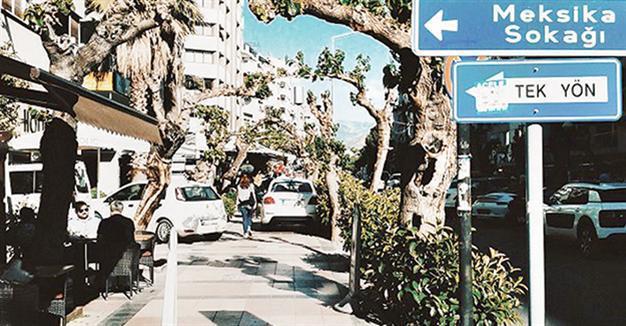Downtown İzmir also suffering from ‘İstiklal effect’
Nazlan Ertan - İZMİR
 İzmirians like to compare Gül Street, right at the heart of posh Alsancak district, to Nişantaşı – particularly after Istanbul-based Sabah columnist and girl-about-town Ayşe Özyılmazel said the İzmirian street had prettier women, more laughter, less traffic and better service than Nişantaşı, the heart of Turkish chi-chi.
İzmirians like to compare Gül Street, right at the heart of posh Alsancak district, to Nişantaşı – particularly after Istanbul-based Sabah columnist and girl-about-town Ayşe Özyılmazel said the İzmirian street had prettier women, more laughter, less traffic and better service than Nişantaşı, the heart of Turkish chi-chi.But walk around Gül Street nowadays and what you see is empty space. Rather like the international brands departing from İstiklal Avenue, the brands of Alsancak are clearly and loudly closing shop, only to reopen at the mushrooming malls around the city: Bornova Forum, Mavibahçe and Point Bornova.
A three-story building that once housed international clothes retailer GAP has been empty for more than a year, along with other stores on the high street that once hosted small local boutiques at Umran Baradan Street, named after the city’s internationally renowned ceramicist. Things are only looking marginally better at the adjacent Meksika Street – a pedestrian street with a statue of Emiliano Zapata – with the many “For Rent” signs. Is it pure irony that the Mexican revolutionary and the inspiration for the agrarian movement Zapatismo has his statue on this street of urbanist consumerism?
Death of the high street?
The death of the high street, as downtown stores carry their business to malls or customers start favoring clicks over bricks, has been high on the global retail agenda for the last few years. Some find the reports of the demise of downtown shops somewhat exaggerated, while others mourn the loss of the community. Mall developers firmly maintain that the community is not dead – only changing – and that the modern mall, which combines safe sidewalks for baby carriages, cafes, cultural areas and innovative art, is everything you wanted downtown to be – only better. Is it any wonder, they say, that customers and brands prefer malls?
“This has been the case for the last several years,” says Dilek Olcay, the head of the Association for Conservation and Development of Alsancak. “We are trying our best to keep the shops from closing or leaving the city center to re-open in malls. But the national brands leave for malls, local boutiques and cafes leave the business. Some of the recently opened stores had a very short life.”
For the tradesmen, the problem is with the rent. “The rent for a store in Alsancak ranges between 500 and 2,000 Turkish Liras per square meter,” real estate agent Ali Kumru told Hürriyet. “When you look at the volume of sales you can have here, this is just too much, not only for local businesses, but for national chains.”
Another real estate agent who asked that her name not to be used said: “We try to explain to the owners that they lose money by leaving them empty for months. They are after an imaginary tenant who is going to pay them 10,000 euros a month and be there for the next 10 years. It’s not going to happen.”
“We think the stores will not leave the high street if they make enough sales to cover costs,” Olcay said. “That is why we have launched our White Nights of Shopping and Alsancak Fashion Days. The last time, some stores said they sold more on three days than they did in three months.”
Could that reverse the trend? Olcay says it would take larger campaigns and more professionalism – and strong dialogue between property owners, shop owners and the local community. “We talk about shopping local, but the İzmirian middle and upper-middle class loves to shop in Istanbul and abroad,” she said.
















